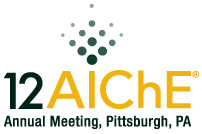

The storage properties and hydrophobicity of biomass can be enhanced by thermal pretreatment. Hydrothermal carbonization (HTC, or wet torrefaction) is a pretreatment process for making a homogenized, carbon rich, and energy dense solid fuel, called biochar, from underutilized lignocellulosic biomass. Compared to raw biomass, biochar is both more hydrophobic for better storage and more friable for better processing. In this pretreatment method, the biomass is treated with hot compressed water in an inert environment in the temperature range of 200-260°C. The range of mass yield of biochar is 60-90% and its energy yield is 75-95%, indicating that the process causes an energy densification of 6-25%. Higher reaction temperature decreases mass yield and increases energy densification.
HTC biochar pellets made from woody biomass are very dense, durable and hydrophobic. Because the pellets are so extremely durable, it is reasonable to consider use of the HTC biochar from woody biomass as a possible binder for blending with raw biomass feedstocks.
Switch grass, rice hulls, and corn stover are three examples of lignocellulosic biomass with lignin content too low to allow for production of durable pellets without use of a binder. HTC biochar from miscanthus treated at 260°C was used as a binder and as an energy booster to produce blended biomass pellets. A hydraulic press with a temperature-controllable heated die was used for pelletization. The blended biomass was pressed into a 13 mm die to make cylindrical pellets 5-8 mm long. Pelletizing was done at a temperature corresponding to the glass transition temperature of lignin. The optimal hydraulic pressure was found to be 20 MPa at a temperature of 140 °C. The pressing time to allow the lignin to melt and bind, was 30 seconds.
Engineered pellets made from blends of HTC biochar and raw biomass exhibit an increase in hydrophobicity, abrasion resistance, energy density, and mass density compared to pellets made from raw biomass.
